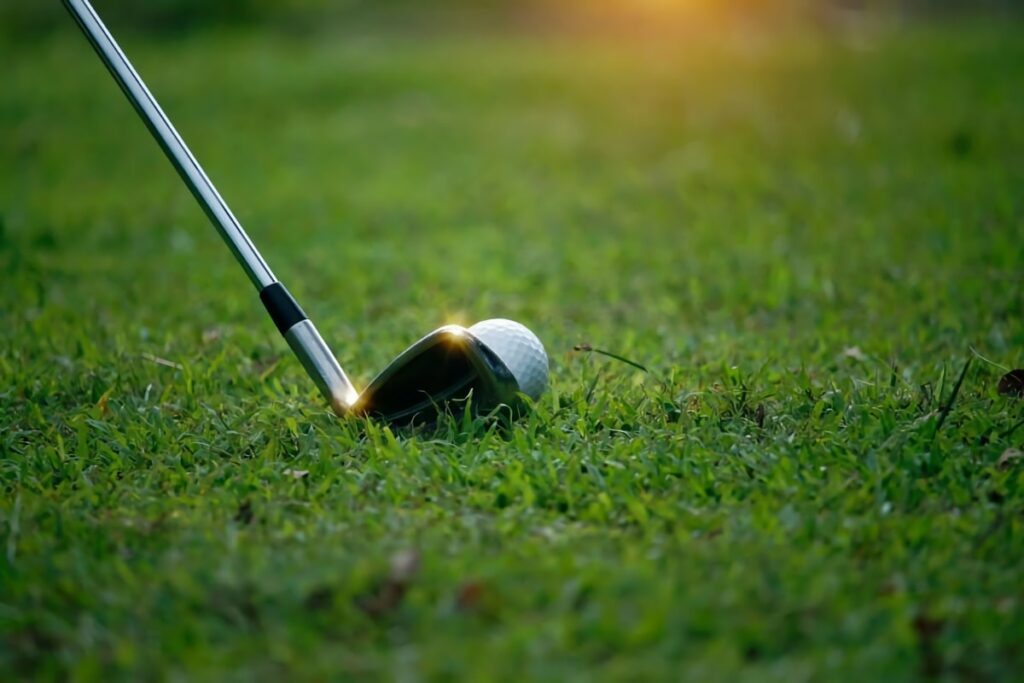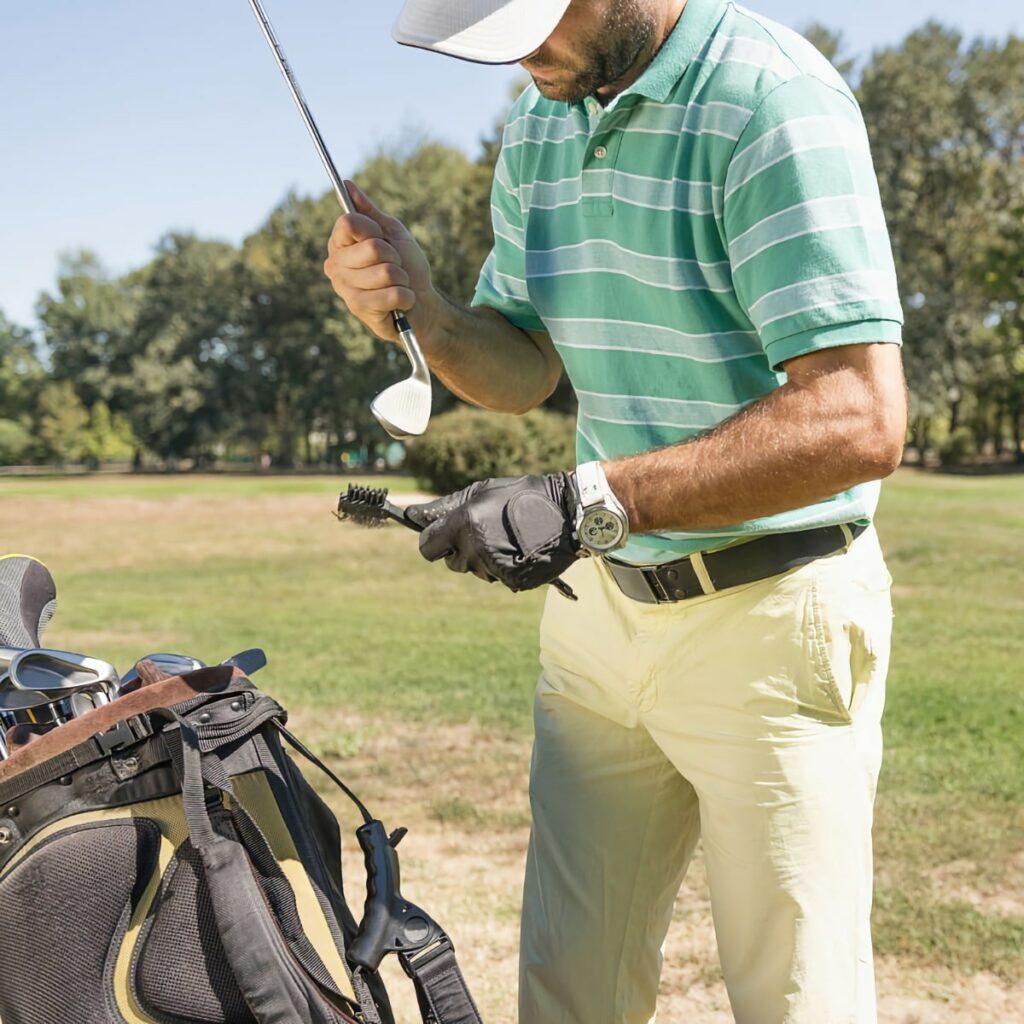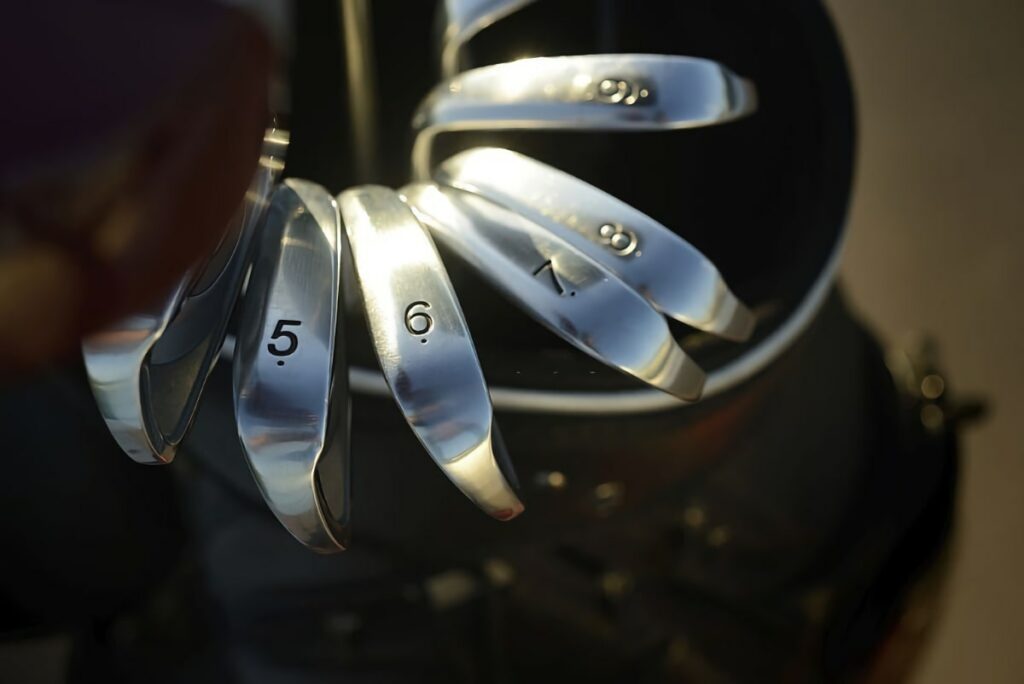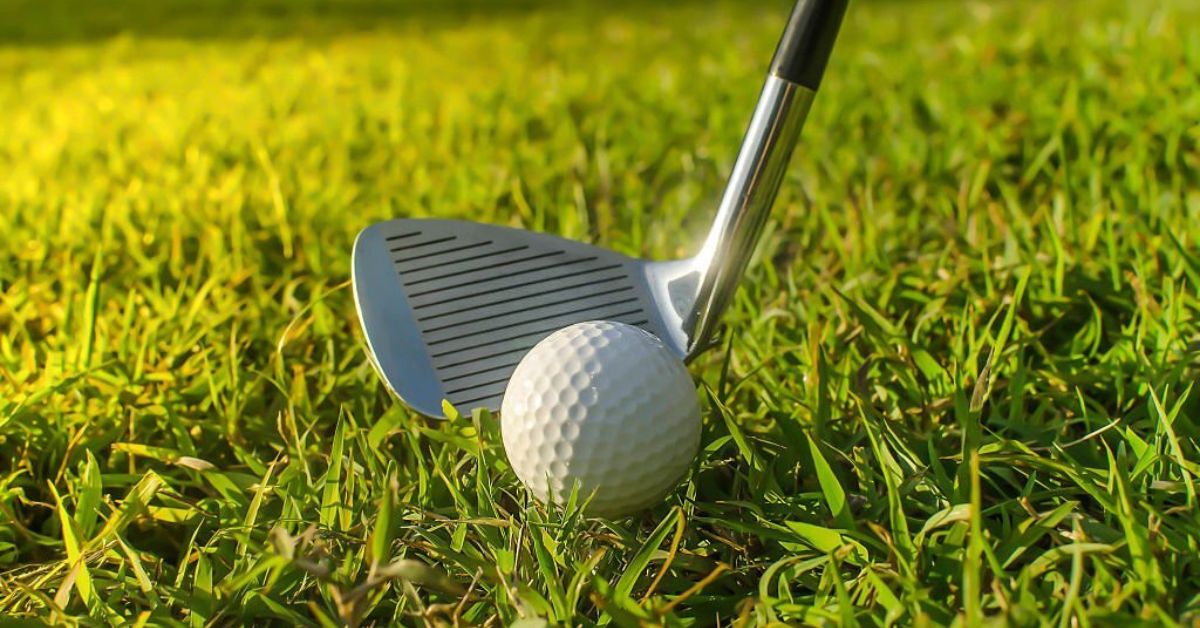The gap in performance between forged and cast irons has reduced significantly in recent years. Nevertheless, many still regard forged clubs as the superior version for lower handicap players, offering premium looks and feel out of the sweet spot.
But, how long do forged irons last compared to cast irons?
In this article, you’ll learn about the durability of forged golf irons, and how long you can expect a set to last. Also, I’ll share tips on keeping your irons in top condition.
Ready? Let’s begin!
How Long Do Forged Irons Last
Forged irons will last for a few years of regular usage before the clubface shows signs of wear. Conversely, cast golf irons are highly durable and last longer. This is because forged irons are manufactured using softer metals. Also, forged irons can easily attract nicks and dings, requiring more care.

What Is a Forged Golf Iron?
There are two ways to produce the club head of an iron — casting or forging.
Cast golf clubs are made by pouring molten metal into a mold — or cast. When the metal cools and hardens, it exits the cast in precisely the desired shape.
The casting process is relatively quick, easy, and cheap, meaning cast clubs are more affordable than forged ones. However, even premium brands such as Vokey use the casting method to produce a high volume of clubs, without sacrificing quality.
By contrast, forged golf clubs have a club head that has been milled and pressed from a single block of metal, shaping it into the chosen design.
The forging process is labor intensive, meaning forged clubs are more expensive. Also, there are more restrictions on shape — in terms of moving mass around the club head. As a result, the design of forged irons is usually simple, classic, and refined.
How Are Forged Irons Made?
The process of forging the club head of irons dates back to around 1750, when golf clubs started being produced out of metal, rather than wood.
Forged irons are crafted using a single piece — or billet — of steel. The billet is heated until it is malleable, then placed in a press to form it into the desired shape.

While cast irons have a good finish upon leaving the mold, forged irons need to be buffed, ground, and detailed by skilled craftsmen to meet the exact design specifications.
Mizuno is a notable manufacturer of forged golf irons. In the video below, Chris Voshall tours the Mizuno Forging Factory to demonstrate the process:
Do Forged Irons Wear Out?
Forged irons are typically made from 1025 or 1025E steel, which is softer than the 304 stainless steel used in the production of cast golf clubs. This ensures the billet of steel can become malleable under 1200ºC of heat so that the club head can be pressed.
While the use of softer metal brings can bring benefits to the golfer such as improved feel, it can also compromise the durability of the club head.
With forged irons, you’re likely to notice signs of wear with repeated use — particularly on the clubface. This happens because the grooves trap water, grass, and sand.
Here are some tips to keep your forged irons in good condition:
- Clean your irons after each shot: Use a club cleaner and a towel to remove any water, dirt, or sand from your irons after each shot. This prevents any damage caused by the friction against the ball — which adds up over time.
- Dry your irons after the round: Once again, use a towel to dry your clubs at the end of the round. This helps prevent the irons from rusting — a common issue with forged irons when the chrome layer disappears over time.
- Invest in a good golf bag: To prevent your irons from clanging into each other during a round, it’s vital to buy a golf bag with enough space and compartments.
- Store your irons properly: Keep your golf clubs in a dry location when you’re not using them, to prevent rusting. Store your bag indoors during the winter.
A good set of irons is a significant investment for many golfers. By taking the time to care for your clubs, you can increase the lifespan of the set.

Do Forged Irons Last Longer Than Cast Irons?
Usually, forged irons won’t last as long as cast irons. This is simply because of the softer metal used in the manufacturing process, which is less durable.
Forged irons are more likely to pick up nicks and dings over time. Unfortunately, this can happen in various ways — from accidentally clipping a stone buried in the ground, to the clubs knocking into one another in the bag.
Nevertheless, the wear on a golf club gives it a certain charm and character — that one dent will forever remind you of that risky cart path shot that paid off!
On the other hand, some players might prefer their clubs to look fresh and new. If this sounds like you, then you’re probably better suited to a set of durable cast irons. These will withstand more impacts, and stay in top condition with minimal effort.
Ultimately, it’s a matter of preference. While careful steps can be taken to keep a forged iron in good nick, a solid set of cast irons can also be a great choice.

Conclusion
In summary, a good set of forged irons will last for several years before showing signs of wear and needing to be replaced. Although, cast irons are made of harder and more durable metal, and will last significantly longer.
Nevertheless, there are ways to keep your forged irons in top condition:
- Clean your irons after shots
- Dry your irons after the round
- Invest in a good golf bag
- Store your irons properly
So, if you’re debating whether to invest in a set of forged irons — don’t hesitate! While they’re not as durable as their cast alternatives, they can serve you for many years.


